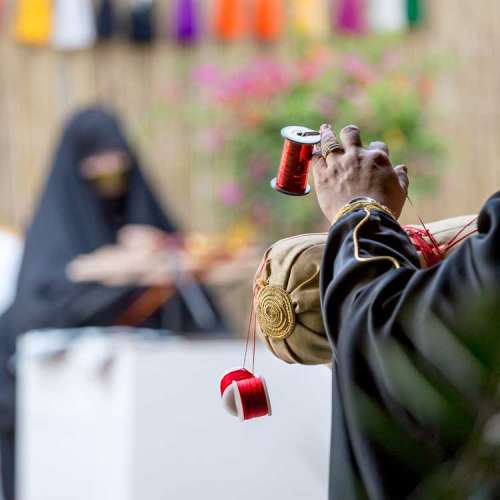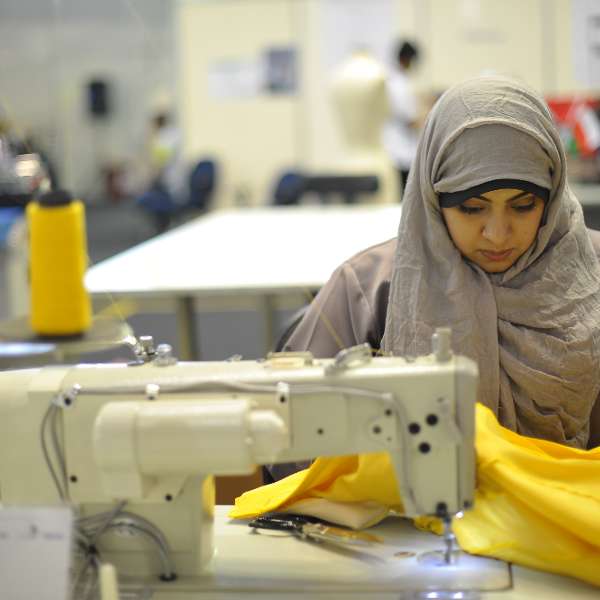Language
Skills are always changing
For the latest information about this skill visit Fashion Technology on worldskills.org.
Fashion Technology
Working with fabrics to cut and create clothes for clients from the high street to high fashion.
Why is this skill important?
The Fashion Technology practitioner designs and creates garments based on an understanding of aesthetics and a strong foundation of technical skills including design, pattern making, and use of specialized equipment for pattern making, cutting and manufacture. There is a wide range of practice - from high fashion or bespoke garments to prototyping for mass production and retail. In all cases, the most successful in this field will have a passion for and understanding of global fashion trends and consumer requirements.
Because fabrics are often expensive, delicate and can be easily damaged or handled incorrectly, the practitioner must be respectful of the properties of raw materials, including knowledge of the ethics and sustainability around materials sourcing, purchasing, handling, and storage. Budgets are all serious considerations in this field.
The design of a garment requires innovation, creativity, and artistic and design talents that incorporate both aesthetics and practicalities. The practitioner applies the theory and principles of design and competition as well as detailed and precise technique.
Understanding a client’s passion and expectation for a distinctive “look”, as well as assessing the attributes of a particular client is critical. The client will have high expectations of the designer; will place a high degree of trust in them; and will count on the “eye” and skill of the practitioner to create something uniquely, individually beautiful.
Featured

Visit the Al Ghadeer UAE Crafts centre
Could this skill be for you?
If you like:
- Using computers
- Using tools
- Being creative
You should also take a look at:
The Challenge
Important elements of the challenge include:
-
Using a pattern provided, each competitor will prepare, sew and finish a garment.
-
Competitors will also be tested on their design skills and will be tasked with making items of clothing on the chosen theme.
-
It is important that each garment is finished to a standard that it is ready-to-wear.
-
Judges are looking for competitors to be creative and artistic with the materials provided.
Skill sponsors
Results
| Medal | Result | Competitor | Country/region |
|---|---|---|---|
| Gold | 749 | Ping Hu | China |
| Silver | 741 | Rhany Moreira | Brazil |
| Bronze | 737 | ZI-JIN LI | Chinese Taipei |
| Medallion for Excellence | 731 | SANGEUI MOON | Korea |
| Medallion for Excellence | 723 | Puttaporn Thammanukul | Thailand |
| Medallion for Excellence | 720 | Elena Kozhinova | Russia |
| Medallion for Excellence | 715 | Flurina Rüesch | Switzerland |
| Medallion for Excellence | 715 | Laura Melissa Rodríguez Muñoz | Colombia |
| Medallion for Excellence | 715 | Anggun Nurdila | Indonesia |
| Medallion for Excellence | 713 | Isabella Schierl | Austria |
| Medallion for Excellence | 712 | Gabriel Leblanc | Canada |
| Medallion for Excellence | 709 | MARUFAH JAILAN | Malaysia |
| Medallion for Excellence | 706 | Weng Chong Chio | Macao, China |
| Medallion for Excellence | 705 | Tahsin-Kerim IBIS | France |
| Medallion for Excellence | 701 | Loïc Gluckmann | Belgium |
| 699 | Elina Skrindzevska | Latvia | |
| 693 | Talat Razia | India | |
| 690 | VOLHA KUSHNER | Belarus | |
| 689 | Seyedeh Atefeh Nabavi Chashmi | Iran | |
| 686 | Joana Queirós | Portugal | |
| 679 | Ka Man, Carmen Poon | Hong Kong, China | |
| 675 | Aino Lammi | Finland | |
| 675 | Kanako Fukuda | Japan | |
| 665 | Hessa Al Shawab | United Arab Emirates | |
| 654 | Nazerke Tayshybayeva | Kazakhstan | |
| 646 | Jonas Kalseth Follestad | Norway | |
| 642 | Alicia MARTÍNEZ | Spain | |
| 638 | Roshida Griffith | Barbados | |
| 633 | Lojun Serri | Saudi Arabia | |
| 631 | KABILA KABENSE | Zambia | |
How to compete
To reach the level of skills required to compete in a WorldSkills Competition takes several years of training and dedication. But the best time to start is now.
Find out more about how to take part in a WorldSkills Competition.






